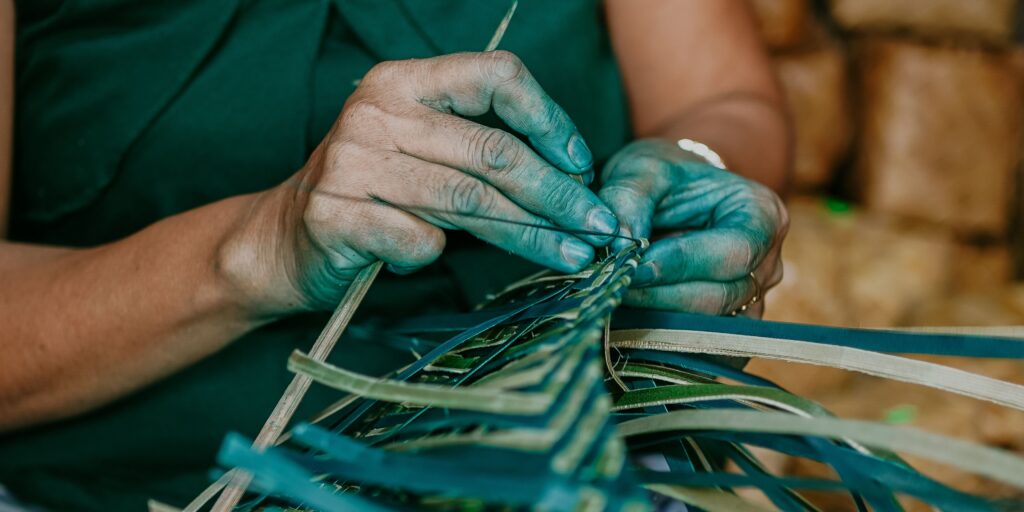The term “texture” is commonly used to describe the appearance and feel of various house decor materials. It’s how something feels to the touch, and it can range from smooth to rough to matte to shiny to soft or firm. Depth, dimension, and interest are all brought to a room by textural elements, and various textures can be used to create a variety of atmospheres and feelings. Textiles like fabrics, carpets, and accessories, as well as non-textile materials like wood, metal, or stone, can all be used to add textural interest to a space.
Texture is crucial to making a room look put together and intriguing. By incorporating a variety of sensory-engaging surface features, it gives the design a feeling of depth, dimension, and complexity. Having a room devoid of substance can make it feel lifeless and boring.

The use of contrasting and complementary textures is essential in interior design. By playing with light and shadow, you can make a room feel warmer and more welcoming with the help of textures. Designers can avoid making a room feel overpowering or repetitive by incorporating a variety of textures into the design.
A room’s texture can be used to set the tone for the entire design. Exposed masonry or reclaimed wood, for instance, can give a space an authentic, industrial vibe, while plush rugs and velvet fabrics can make it feel warm and inviting.
Types of texture
- Visual Texture
Although some materials lack a discernible physical texture, they can give the impression of having one through their visual texture. Various surface treatments, including designs and finishes, can be used to generate a variety of visual textures. Textures in the graphic arts can include:
- Geometric patterns on wallpaper or textiles
- Woodgrain finishes on furniture or flooring
- Faux finishes like marble, concrete, or distressed metal
- Trompe l’oeil (illusionistic) murals or artwork
- Tactile Texture
The tactile texture of a material is its real physical feel when touched. There is a wide spectrum of materials that can be felt by the touch. The following are some examples of surfaces that can be felt by the touch:
- Soft textures like plush fabrics, such as velvet or chenille
- Rough textures like exposed brick or concrete walls
- Natural textures like woven fabrics, jute rugs, or wooden furniture
- Shiny textures like glossy tiles or metallic finishes
Textures, both seen and felt, are a great way to enrich the aesthetic and physical experience of a room. Designers can improve a space’s visual appeal by layering various textures on top of one another.
Tips for Incorporating Textured Textiles in Home Design

Some suggestions for using patterned fabrics in interior design are as follows.
Think about the room’s current color scheme, patterns, and materials when choosing textured textiles. Pick textured fabrics that work with the overall theme of the room.
Use a variety of textures layered together to make a more dynamic and visually fascinating design. A plush rug placed on a hard and smooth timber floor, for instance, creates a sense of coziness and dimension.
Consider the room’s current color scheme when shopping for textured fabrics. Textured textiles in a solid hue can help bring visual harmony to a space with a lot of pattern.
Don’t be hesitant to try out new combinations, such as a woven throw with a shaggy pillow and a faux fur rug. It is possible to give a room more depth and visual interest by layering various textures.
Using textured textiles in interior design is a great way to give a room more personality, dimension, and visual appeal. You can make a place that’s uniquely you by working with what you have, adding layers of texture, paying close attention to color and pattern, and trying out new textiles.
Textiles are a great way to give a room more texture and visual interest in interior design. The addition of textures to a space can increase its comfort level, as well as its visual attractiveness and interest. You can make a layered and cohesive appearance that is uniquely you by picking the right fabrics and employing them in the right ways.

It’s crucial to take into account the room’s current color scheme, pattern, and fabrics when making a textiles purchase. Adding visual interest and movement to a room is as simple as layering textures, incorporating a variety of textiles, and paying close attention to color and design.
Texture can also be added with textiles, which can be used in many different ways. They have many potential applications, including placement on household items, glass surfaces, flooring, walls, and accent pieces. Textured fabrics are incredibly versatile and can be used in a variety of settings, from a plush rug to a woven throw.
In general, using fabrics to increase the depth and dimension of a room is an excellent strategy for making a room more engaging to the eye. You can make a room feel cozy, welcoming, and personal by taking into account preexisting design elements and experimenting with various textiles.

